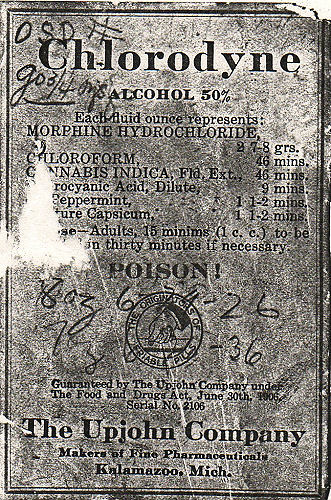
Chlorodyne
was a widely used product in the 19th and early 20th centuries for cholera,
diarrhea, insomnia, neuralgia, migraines and other conditions.
It contains morphine and
cannabis (marijuana). How could that combo not make anyone
feel good? Of course, it was highly addictive and death from
overdoses were frequent occurrences. Coroners reports often
stated that the deceased was surrounded by many empty Chlorodyne
bottles.